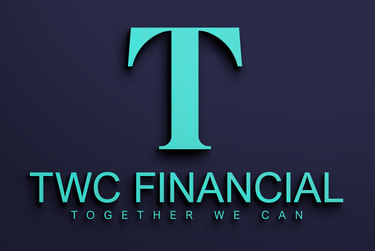Cultivating Wealth with a TFSA
How to maximize savings with TFSA
Taimoor Tariq
1/3/20246 min read


$95,000
TFSA contribution room for 2024
The maximum TFSA contribution limit possible
Taxes you'll have to pay on TFSA earnings
$7,000
$0
What is a TFSA?
A Tax-Free Savings Account (TFSA) is a registered tax-advantaged savings account that can help you earn money, tax-free. You can think of a TFSA like a basket, where you can hold qualified investments, that may generate interest, capital gains, and dividends, tax-free. Whether you're saving for your dream wedding, a rainy day, your first home, or an extended vacation, a TFSA can help you reach your goals sooner. To get you started, we break down: what is a TFSA, how it works, and how it can benefit your savings plan.
How does a TFSA work?
You can hold qualified investments like cash, stocks, bonds, mutual funds in a TFSA and can withdraw contributions as well as the interest, capital gains, and dividends earned in the account at any time1, without paying taxes (or reporting the withdrawals as income when you file your taxes).
Each year, the Government of Canada determines the maximum amount a holder of a TFSA can contribute to it in that year. This limit is known as the contribution limit. The contribution room begins to accumulate every year, if any time beginning in the calendar year a Canadian resident is 18 years and older. If you don't contribute up to the contribution limit for a given year, this amount is carried forward and is added on to your contribution room for future years.
What are the benefits of opening a TFSA?
There are many benefits of using a TFSA to save:
Added flexibility. A TFSA is a savings solution that offers you the flexibility to save for a multitude of short-term and long-term goals. It can help you reach your saving goals, and you can withdraw your money when you need it 2 .
Tax-free growth. You pay no tax on any investment income you may earn in your TFSA and you can hold a variety of qualified investments, including cash, stocks, guaranteed investment certificates and mutual funds. The higher the return potential on your investments, the faster your savings may grow, tax-free.
Retirement planning. A TFSA can complement your personal RRSP by providing additional tax-advantaged savings when you have no more RRSP contribution room or you are over age 71 and not allowed to hold an RRSP anymore. By contributing to a TFSA, any income earned in the account is tax-free, even when withdrawn.
Making Withdrawals. You can withdraw funds from the TFSA without paying tax. This can make the TFSA a great tool to save for big-ticket items. When you're ready to use your funds, you can withdraw without paying tax. This gives you more money for the things you care about.
How much can I contribute to my TFSA?
The TFSA annual contribution room for 2024 is $7,000. You can also carry forward any unused contribution room from previous years. Click here to see the annual TFSA dollar limit for each of the years, since TFSA was introduced in 2009.
2024 TFSA Contribution Limits and Withdrawal Rules
Whether you're saving for a big purchase, your first home, or an extended vacation, a Tax-Free Savings Account (TFSA) could help you get there. Once you’ve opened a TFSA, you can contribute to your TFSA at any time and income earned from eligible investments or products opened through your TFSA may grow tax-free – unlike a non-registered savings account.
How much you can contribute once you've opened an account is determined by your contribution room – the maximum amount that you can contribute to TFSAs in any given year. Your contribution room accumulates each year in which you are 18 years of age or older and a resident of Canada, even if you don't file an income tax return or open a TFSA. So, if you've opened a new TFSA in 2024 and have previously never contributed to a TFSA, you would have a total contribution room of $95,000 if you were 18 years or older in 2009 and were a resident of Canada from the year 2009.
Your contribution room consists of the current year's contribution limit, any unused contribution room that you have accumulated from previous years and the total value of TFSA withdrawals made in the previous year.
All contributions made during the current year to your TFSA, including the re-contribution of withdrawals, count against your contribution room.
Contribute often to see your money grow, tax-free
Since the money you earn from investments you hold in a TFSA (interest, dividends or capital gains) is not taxed, it has the opportunity to grow faster than it would in a non-registered account.
Another way to save faster is by setting up regular (weekly, monthly, etc.) automatic contributions into your TFSA.
How regular, automatic contributions work
You decide how much to save and how often—weekly, bi-weekly, monthly—it’s up to you. Be mindful of your available TFSA contribution room when setting up automatic contributions.
Contributions are automatically debited from your bank account
You can change how much you want to save, how often you contribute, and stop or pause your contributions at any time
Take money out to use for any reason
While you can take money out of a TFSA for any reason (a car, your wedding, retirement, etc.), your timing does depend on the investments you hold in it. For example, non-redeemable GICs must be held until maturity.
Here are a few other things to know:
You won't have to pay tax on money you take out.
Withdrawals won’t reduce benefits and credits you’re eligible to receive from the Federal Government, such as Old Age Security (OAS).
Withdrawals get added back to your unused contribution room. However, you have to wait until the next year or later to re-contribute these amounts.
How does a TFSA withdrawal work?
One confusing aspect of TFSAs is how TFSA withdrawals affect how much you can contribute to your TFSA. A withdrawal will provide you with contribution room in the next year, not the current one. So, hypothetically, if every year you had contributed the maximum to your TFSA and then you withdrew $1,000 in 2023, you’d have to wait until January 1, 2024, to get that $1,000 contribution room back. Even if you were just hoping to replace your withdrawal, a $1,000 deposit into your TFSA anytime in 2023 (assuming you'd already contributed the max for the year) would be considered an over-contribution and subject you to CRA fines.
What's the penalty for exceeding the TFSA limit?
The CRA may get a bad rap, but it’s not trying to get you to over-contribute to your TFSA in order to collect a few extra dollars in fees. In fact, the agency will normally send a letter in the first instance of an over-contribution and allow you to withdraw the excess amount before they would hit you with a penalty. Thoughtful, huh?
But if you ignore the warning, and any over-contribution stays in the account, the CRA will then charge 1% a month of your over-contribution amount until you remove it. For example, if you over-contribute by $2,000, you'll pay $20 a month in fines until you withdraw the excess.
How is a TFSA different from an RRSP?
TFSAs and RRSPs offer tax advantages that can help you achieve your saving and investing goals. In choosing one over the other, it's important to understand the differences and the benefits of each type of registered plan.
An RRSP is designed specifically to provide you with income after you retire. Your annual contribution limit is based on your prior year income, subject to certain adjustments and an annual maximum limit. Information on your contribution limit can be found on your prior year notice of assessment. The contributions you make are tax-deductible; withdrawals, on the other hand, are subject to taxation.
A TFSA is not designed specifically for retirement and can help you save money for a wide range of goals. The amount you can contribute is not based on your income and your contributions are not tax-deductible. You can withdraw your money any time you want it1, and you don’t pay tax on those withdrawals. You are also able to recontribute amounts withdrawn from your TFSA the following year or subsequent years without impacting your contribution room in those years.
What are my TFSA investment options?
You can hold a variety of qualified investments in your TFSA – with common investment types being:
Cash
Mutual & Seg Funds
GICs
Stocks
Bonds
Each investment type can differ in its advantages and disadvantages based on your savings goals. Consulting with us will help you assess which investment option may be best for you, given the level of risk you're willing to take.
Want to know by how much? Use our TFSA Calculator to calculate now.
Need Financial Advice?
The first step to optimizing your finances is just a phone call away! Speak to a TWC advisor today to learn how to ensure your finances are secure and growing
We're here to help
Contact
info@twcf.ca
Socials
Subscribe to our newsletter
+1 (778) 926-2894
